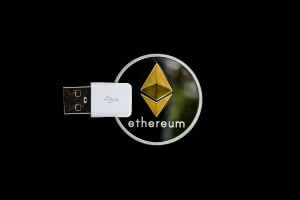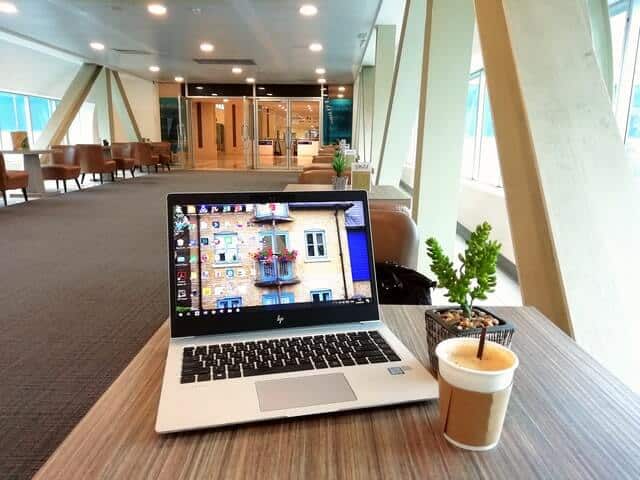Ethereum (ETH) is the second-largest cryptocurrency network in the market and it has been attracting a large number of users, clients and companies that leverage smart contracts and its capabilities. Compared to Bitcoin, Ethereum has many advantages and running a node in this network could help the whole ecosystem expand. Many consider that buying ETH is one of the ways of supporting this network. However, it is also possible to help the Ethereum network by running a full node that synchronizes with the Ethereum blockchain.In this way, you will be able to validate and execute transactions, control the network is running properly and get some Ether as a reward. In this article, we will be explaining how to install and run an Ethereum Node through Parity’s client.You can also read our article about the Top 5 Decentralized Applications Running on Ethereum.

First Steps To Support the Ethereum Network
The first thing we need to do if we want to run an Ethereum node is to download the Parity Ethereum client. So as to do so, we will need to go to the release page on GitHub where we can download the executables and install them on our system.If you don’t want to have issues with the whole system, the best would be to download stable versions rather than the beta downloads available. It would be much more productive to have a stable version of the system that would not have major issues or affect the way in which the node gets connected to the network and provides information to others.If you have arrived here, you are already very close to getting online with your node. If you want to support the Ethereum network, move forward following the next steps. Moreover, you can also trade Ethereum on the Binance exchange now that a new bull market seems to be starting.If you want to know how to trade with BitMex, you can read our guide here. BitMex is a different exchange that was specifically created to trade with leverage. At AltSignals we provide crypto trading signals for you to know when to enter the market and trade not only Ethereum but also other cryptocurrencies.
Getting Connected to the Ethereum Network
After installing the Parity Ethereum client, you will have to start running the node with the default configuration, this would make things easier for you. If you do not know how to do it, don’t worry, it is very straightforward. The only thing you will have to do is to launch the executable using the command line and writing ‘parity.’Isn’t it that difficult, right?Remember that all that we are doing through this process will certainly be helpful for the whole crypto and Ethereum ecosystems. This is one of the best ways in which we can support the Ethereum network. In this way, you will receive all the necessary information from the network and the whole blockchain that will help you process the necessary data to move forward. In general, the synchronizing process of a node can take a long time considering it is necessary to include the information about previous transactions and blocks.Both Ethereum and Bitcoin have public blockchains. All the transactions and movements inside the network are registered. As there is more information being stored on the blockchain, it can take a longer time for you to synchronize it. However, we can use the warp mode that would make the whole synchronizing process a relatively fast thing. This would exclude previous blocks, something that would allow you to set up and run your node as soon as possible. This is an optional thing you can add and doesn’t need to be done.

Get Involved: Support the Ethereum Network
By running an Ethereum node, you are becoming involved with the network. This is certainly important for cryptocurrencies such as Ethereum and Bitcoin (BTC) that require users to participate in these decentralized processes. Although this is not easy, and it can be somehow difficult the first time, the community will be grateful for the effort you do. The larger the number of nodes across the world, the more secure and established a network becomes. This also helps the network become more resistant to different kinds of attacks and reinforces its decentralized characteristics.Users that run an Ethereum node will also be able to earn a lot of benefits that are not necessarily material. For example, individuals will have the possibility to process faster transactions and get improved privacy and security.When you start running your Ethereum node, you will make it easier for the network to broadcast transactions, which reduces the latency when sharing the blocks across the whole blockchain. Furthermore, the Ethereum project becomes more robust and healthy.If you invested large amounts of funds in Ethereum or you believe in decentralization, the best thing you can do is running a node that would make the whole network much more resilient, secure and decentralized.
Conclusion
In this article, we explained how to easily set up a node and how to easily support the Ethereum network. At the same time, we shared with you which are the main benefits of running a full Ethereum node that would help the network and that would be compliant with the ethos of cryptocurrencies and blockchain technology.If you want to start investing in Ethereum by following trading signals, you can do so with AltSignals, one of the most trustworthy and recognized Telegram crypto trading signals providers in the market.





















